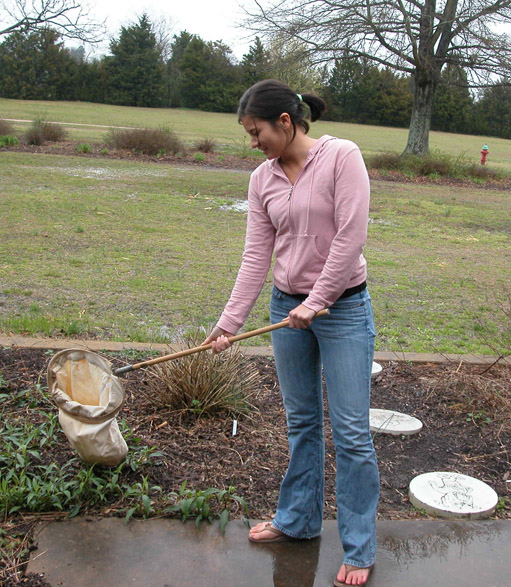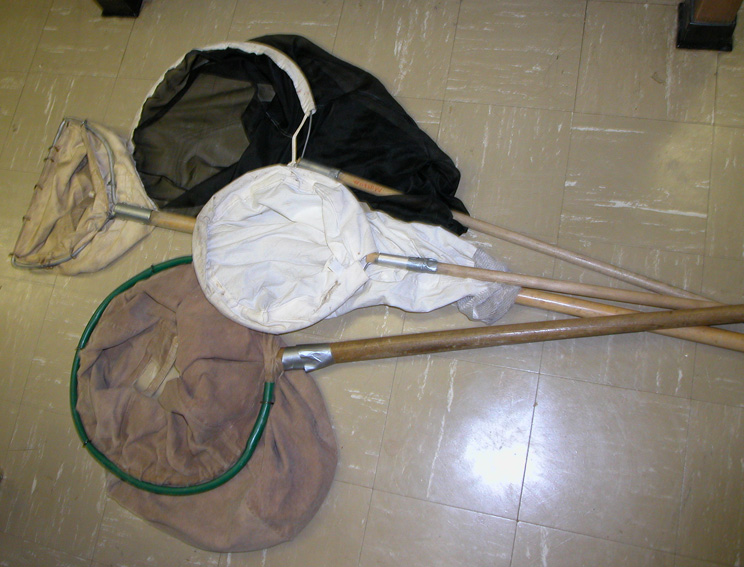Insect Nets for Collecting Flying Insects and Sweeping VegetationAuthor: Joe A. MacGown |
Insect nets (both aerial and sweep nets) - There are three basic types of insect collecting nets that are available for purchase at various companies (such as BioQuip) or that can be made by the individual: aerial, aquatic, and sweeping nets. Basically, a collecting net is composed of some sort of net bag made of cloth or fine mesh that is attached to a wire hoop, which is affixed to a wooden or metal pole. Nets come in many sizes with some having the circumference being smaller than others and with variable pole lengths as well. Aerial nets typically have net bags that are composed entirely of some type of meshed material and often have a lightweight handle. Aerial net bags are usually white in color, but black net bags are also available. They are most useful for catching select insects that may be flying through the air or perched on something (such as dragonflies, butterflies, bees, or wasps). Aerial nets with larger hoops are better for collecting large and fast moving insects such as dragonflies and butterflies, while those with small hoops are better for bees, flies, wasps, and other smaller insects. In the tropics, very long handled nets are used to collect butterflies that are found high in trees. Sweep nets are usually made of a heavy material (such as canvas) that can be dragged through dense vegetation without being damaged. They usually have heavier handles than those on sweep nets as well. Sweep nets are used to sweep through vegetation to collect random insects not easily seen. A combination of aerial and sweep nets are also commonly used, with the majority of the net bags being made of a heavier cloth and and approximately the apical third of the bag made of fine mesh material. This type of net is a good compromise between the two types of nets and is good for general collecting. Aquatic nets also have heavy duty net bags and handles and have square to triangular thick wire hoops. Aquatic insects are collected by dragging the net through the substrate of aquatic habitats and then depositing the accumulated material into a large white pan to sort through. |
 |
Toni Peters demonstrating the use of a sweep net. |
 |
An assortment of nets: The large brown net at the bottom is a sweep net; the circular white net in the middle is a combination aerial/sweep net; the dingy white net under the white net and above the brown sweep net, is an aquatic net; and the black mesh net is an aerial net. |


